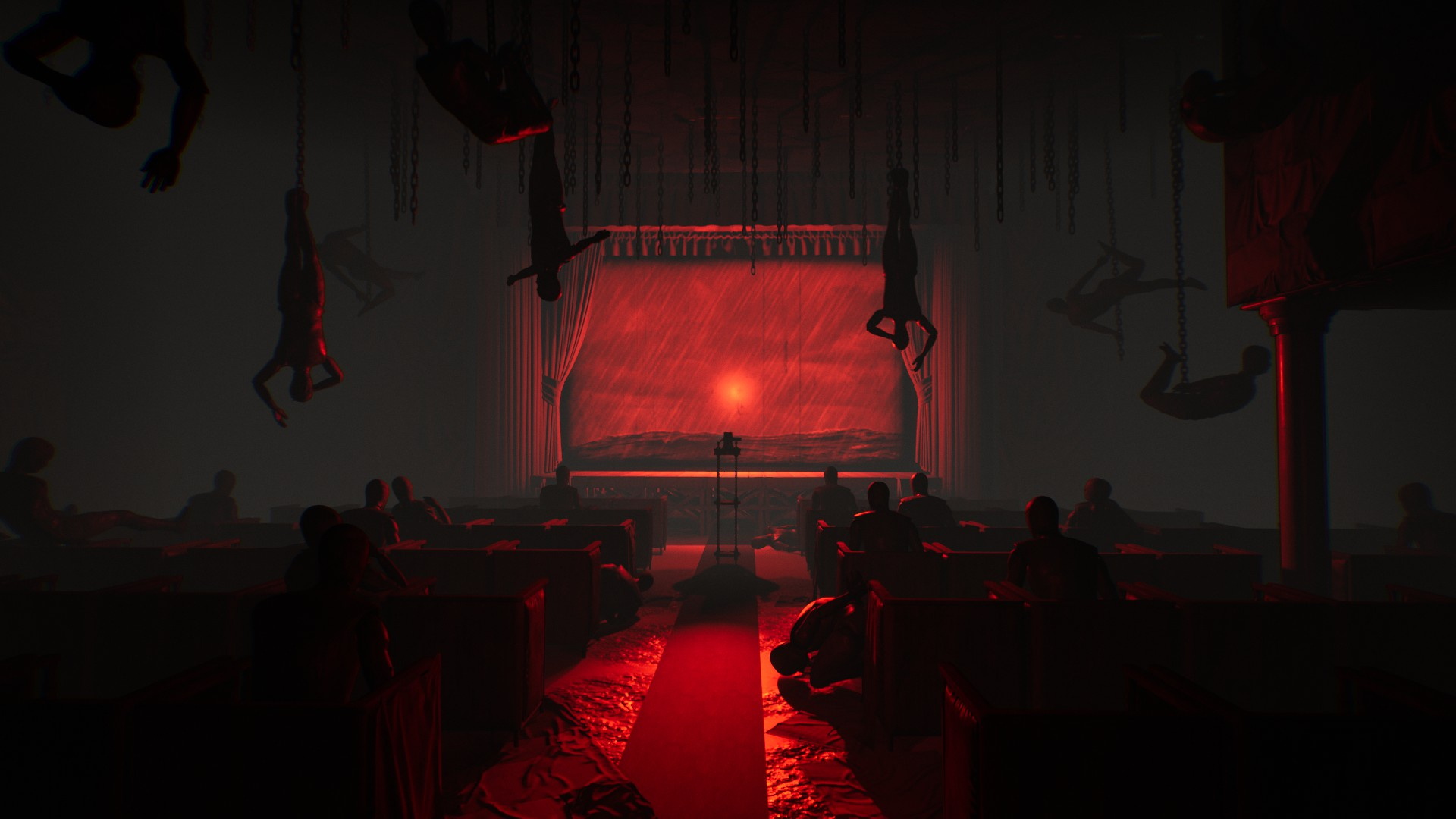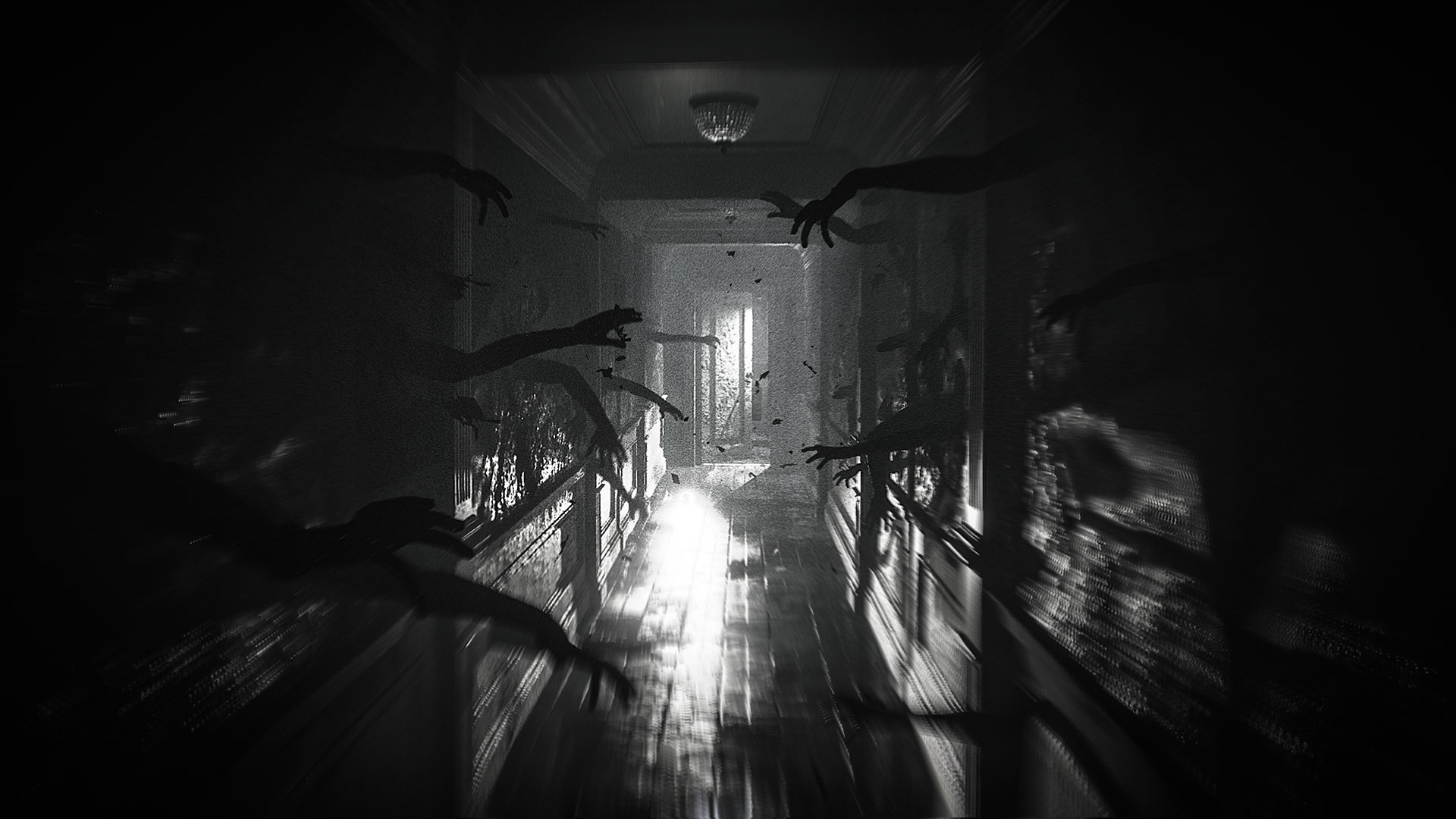
A successful horror game does more than just create strange and distressing imagery for its player. It digs into their mind to alarm and disorient, leaving them fearful even in seemingly innocent or peaceful situations. If it’s really doing its job, a horror game should never feel like a mere slideshow of weirdness, and yet that’s all Layers of Fear 2 manages to be from its opening moments to its mediocre finale. If it was aiming to create even a modicum of fear or anxiety, it certainly failed to succeed on me.
Where an incredibly tense game like Outlast melds together macabre ambiance, jump scares, and genuinely high-stakes gameplay with a sense of purpose, Layers of Fear 2 doesn’t manage to conjure so much as a mildly compelling reason for doing… well, anything. Moseying around picking up items and reading pieces of paper might be more rewarding if any of the game’s bizarre optical illusions tied together into something cohesive, but it instead offers us little more than a collection of rooms and events seemingly saying, “Look at how weird this is. Isn’t this so scary?”
"Moseying around picking up items and reading pieces of paper might be more rewarding if any of the game’s bizarre optical illusions tied together into something cohesive, but it instead offers us little more than a collection of rooms and events seemingly saying, “Look at how weird this is. Isn’t this so scary?”"
But no, Layers of Fear 2 is not scary. There’s the normal flickering lights, hallucinations, and some admittedly trippy one-off segments that impress from purely an aesthetic standpoint with fantastic visuals. Rats scurry past you as you navigate dark cabins and banquet halls on the ship, and some of the otherworldly sections of the game are delightfully mysterious in presentation. But there’s nothing about any of it that leads to feelings of trepidation. An endless onslaught of seemingly old-timey mannequins litter the game’s locations and often change stances or suddenly appear behind you upon turning your back momentarily, but the effect is used so frequently and unenthusiastically that it’s tiresome by the end of the game’s first act. They’re seen as props in some key scenes to draw the player’s attention to items or keys to obtain, but since nothing truly scary ever really happens, I found myself checking my phone during an in-game elevator ride packed full of them. It’s a perfect example of just how apparent the game had made it that I never had anything to actually be afraid of.
There’s a monstrous apparition that shows up in certain scenes, but rather than evoke genuine fear, it often one-shot kills you unexpectedly. One such situation had me walking down a hallway with a door ajar on my left begging to be opened further, but doing so resulted in sudden death by the monster. But since the scene itself built no tension beforehand nor gave me any real opportunity to escape, the shortly-lived jump scare solely brought me frustration, not fear. When it’s not one-shotting you this way, the monster chases you through linear paths until you reach a predetermined point where you escape or close a door on it. These scenes are at least more intimidating than sudden death, and I appreciated the brief sense of adrenaline, even if it was usually followed up with the game’s normal tameness.
Layer of Fear 2’s core gameplay relies heavily on a looping mechanic. When it wants you somewhere specific, it ensures all other paths are blocked off to funnel you in the desired direction. Immediately after, merely turning around will have unlocked will change the scenery and open up new paths to proceed through. There’s nothing really wrong with this type of progression, but Layers of Fear 2 telegraphs them so obviously and constantly that I became aware of the tricks early on and found myself knowing precisely when and where I’d trigger an alteration. “A dead end? Time to turn around and act surprised at the change!”
"There’s nothing about any of it that leads to feelings of trepidation. An endless onslaught of seemingly old-timey mannequins litter the game’s locations and often change stances or suddenly appear behind you upon turning your back momentarily, but the effect is used so frequently and unenthusiastically that it’s tiresome by the end of the game’s first act."
Aside from the fundamentals of being an actor in a movie on a ship, you’re offered very little coherent exposition to set you off on your journey. The movie’s director narrates some sections with vague, nonsensical dialogue that is clearly meant to confuse and concern you alongside its eerie imagery, but without any deeper initial understanding or sense of purpose, it’s a chore to try to comprehend what’s going on beyond the principle theme of early childhood trauma. The game’s obsession with its repetitive mannequin shtick and bottom-tier shock value never seems to mesh with the more intimate ideas it’s trying to convey, and as it tries desperately to prove to you how profound it can be with its enigmatic storytelling, it only comes across as pretentious. I had things figured out by the end, but by then I was bored by its self-importance and frankly didn’t care anymore.
Much of the game’s more intimate details are told through various scattered items and pieces of paper that give cryptic clues to piece together for the larger story. These moments of exposition are some of Layer of Fear 2’s best, providing some insight into the deeper psychological trauma your character experienced growing up. Even when it wasn’t making a lot of sense, I still enjoyed these warmer, dialogue-heavy memory sequences. I couldn’t help but feel that these sections of the story could’ve avoided dragging the game’s horror down with so much tonal inconsistency if they were reworked and placed into a softer adventure game along the lines of What Remains of Edith Finch or Dear Esther.
The puzzles are Layer of Fear 2’s best feature by far. One type of puzzle in particular sees players messing with a slide projector to make doors and items appear. Moving the film to one frame creates a door in the wall, another creates the key, and another spawns a locked doorknob on the door. It’s easy to figure out but unique enough to stand out as a meaningful memory and serves as an interesting pit stop in an otherwise not-so-interesting experience. A few puzzles seem designed to halt progress with ambiguous objectives, but most are more standardized and deal with basic concepts like finding and remembering numbers or aligning mechanical pieces to create new pathways. Ultimately, they’re all a nice reprieve from the monotony of opening doors and holding up on the left stick in an otherwise uneventful game that never brings its scattered ideas together cohesively.
"Though it seems endlessly determined to prove otherwise, Layers of Fear 2 is neither scary nor deep."
Though it seems endlessly determined to prove otherwise, Layers of Fear 2 is neither scary nor deep. An intriguing setup quickly falls apart with a lack of coherent storytelling, bland horror tropes, and an unhealthy obsession with mannequins.
This game was reviewed on the PlayStation 4.
Visually attractive; Some unusual puzzles.
Total lack of tension; Boring, pretentious narrative; Insta-death sequences; Mannequins aren’t scary.



















